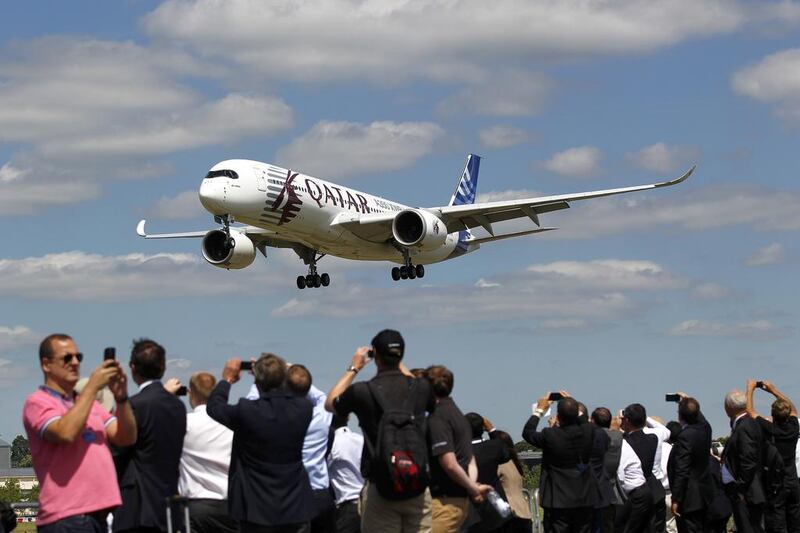Airbus’s A350 jet landed at the company’s Toulouse base in southern France Wednesday night to end 14 months of trials that pave the way for the new model’s certification and first delivery later this year.
The flight from Helsinki completed a three-week, four-stage tour with one of five test planes visiting 14 destinations including Johannesburg, Sydney, Santiago, Doha and Moscow.
Airbus crews were at the controls, assisted by so-called airworthiness pilots from the European Aviation Safety Agency (Easa).
The trials and supporting documentation should ensure certification of Airbus' answer to Boeing's 787 Dreamliner within weeks, clearing the way for the first delivery in the fourth quarter to Qatar Airways, the A350's largest customer with 80 on order. The next challenge for the European manufacturer involves accelerating production from a handful of prototypes to output of 10 widebody planes a month by 2018.
“It’s a milestone that means we can retire the technical risk,” said SG Securities analyst Zafar Khan, who has a “buy” rating on Airbus stock. “The issue going forward is on industrialisation of the ramp-up, which is challenging, because you’re no longer building for a test programme, but to sell — and therefore to have a targeted cost for actual assembly.”
The first A350-900 will carry 315 passengers with a range of 7,750 nautical miles. A later variant, the A350-1000, will enter service in 2017, seating 369 people.
Airbus, which spent in excess of €11 billion developing the twin-engine A350, has promised investors the programme will be profitable before the end of the decade. The company last year made a provision of more than €400 million for underestimating the cost of the initial batch, a step that continued a recent history of jetliner cost overruns.
The double-decker A380 suffered glitches with wire installation and wing cracks that appeared after service entry, and should finally turn profitable next year, Airbus has said.
Boeing’s 787 was three years late when it began commercial operations in late 2011. The US manufacturer is also targeting cash-flow break even for the programme in 2015.
Airbus’s A350 programme director, Didier Evrard, said last month at the Farnborough Air Show that the company may seek to raise output to 12 planes a month if it can achieve production enhancements such as faster manufacturing of carbon components.
Fernando Alonso, senior vice president for flight and integration tests, said in an interview that the model’s on-schedule performance in the recent three-week proving tour — during which he was part of a crew which flew Toulouse- Johannesburg-Sydney-Auckland-Santiago-Sao Paulo-Toulouse back-to-back — was a key reliability indicator.
While engineers from Easa raised some questions, “we really didn’t discover anything that we didn’t already know about,” he said.
The next step is to fulfil flight requirements needed to secure the maximum range for extended twin-engine operations, or Etops, which governs how far planes with only two turbines can fly from the nearest diversionary airport and is a key limiting factor for trans-oceanic services.
Over the next two weeks the A350 will perform six or seven more long-range flights over water, Mr Alonso said, initiating power and systems failures to show it can fly for seven hours on one engine. The longest current Etops range of 5-1/2 hours was granted to the Boeing 787-8 variant in May.
Once A350 tests are complete Airbus will focus on the A320neo programme, with the first trials involving a re-engined version of the single-aisle jet planned for September.
Follow The National's Business section on Twitter





